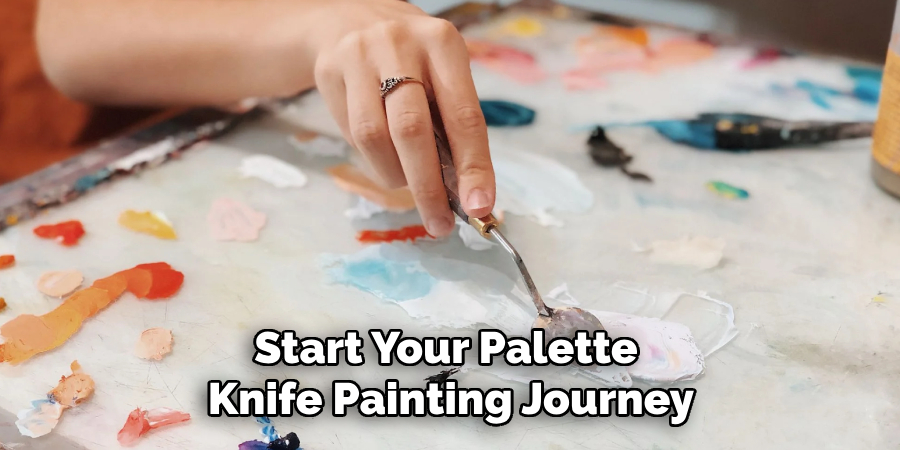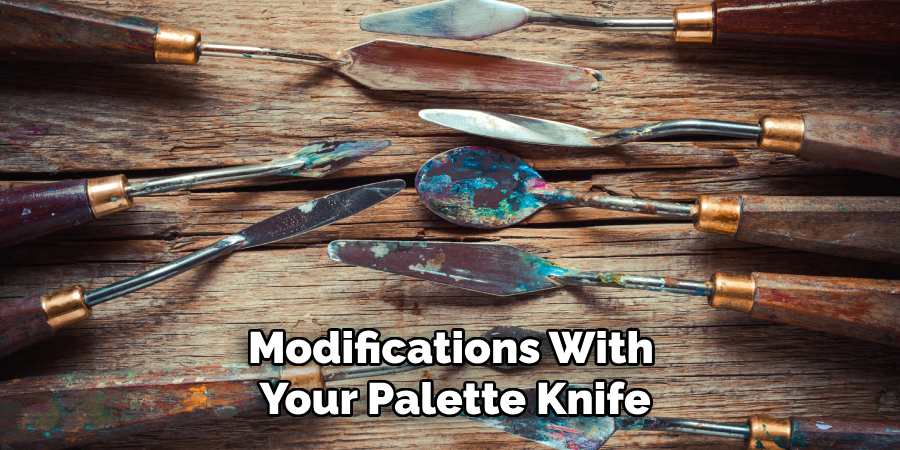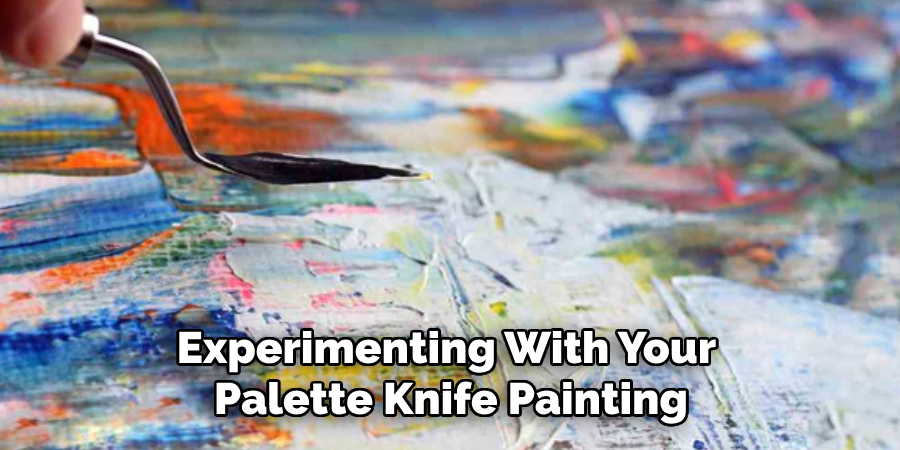Painting with a palette knife is a dynamic technique that allows artists to create stunning textures and layers in their artwork.

Unlike traditional brushes, palette knives offer a means to apply paint in a more expressive and liberated manner. This method is prevalent in modern and abstract art, as it facilitates the creation of bold strokes and the mixing of vibrant colors directly on the canvas. Whether you are a beginner or an experienced painter seeking to explore new techniques, understanding the nuances of using a palette knife can expand your artistic repertoire and lead to the creation of unique and personal pieces.
This guide on how to paint with a palette knife aims to provide an overview of the essential tools, techniques, and tips necessary to begin your journey into palette knife painting.
What Will You Need?
Before we delve into the techniques and tips, it is crucial to understand what materials and tools you need to get started. Here are some essential items that you will need:
- A Set of Palette Knives: These come in various shapes and sizes, so it is best to have a variety to experiment with.
- Paints: Due to their thicker consistency, acrylic paints are the most commonly used for this technique, but you can also use oils or even watercolors.
- Palette: A flat surface to mix your paints on.
- Canvas or Painting Surface: This can be a canvas, wood panel, or any other surface suitable for painting.
- Reference Image: It is always helpful to have a reference image that you can work from to guide your strokes and color choices.
Once you have gathered all the necessary materials, you can start your palette knife painting journey.
9 Easy Steps on How to Paint With a Palette Knife
Step 1. Prepare Your Workspace:
Creating the perfect workspace is the foundational step to ensuring a smooth and enjoyable painting process. Begin by selecting a well-lit area, as good lighting is essential for accurately perceiving colors and details in your artwork. Natural daylight is ideal; however, if this isn’t possible, invest in quality artificial lighting. Make sure your workspace is clutter-free to avoid distractions and provide ample room to maneuver your materials. Protect your surfaces with newspaper or a plastic sheet to easily manage spills and keep your area clean.
Organize all your tools, such as palette knives, paints, and palette, within easy reach to maintain a seamless workflow. Additionally, having a comfortable chair or easel that supports good posture can help you focus on your craft without strained muscles.

Step 2. Choose Your Color Palette:
Selecting a color palette is a vital step that influences the mood and expression of your painting. Begin by considering the overall atmosphere or theme you wish to convey. Harmonious and complementary colors often create a sense of balance, while contrasting and bold hues can evoke excitement and drama. Limit your palette to a manageable number of colors, typically around three to five, to prevent overwhelming the composition and to maintain clarity in your work. Arrange your chosen paints on your palette, ensuring they are mixed to the desired consistency for optimal application with the palette knife.
Taking time at this stage to select and test your color choices will guide your painting process and enhance the visual impact of your final piece.
Step 3. Apply the First Layer:
Start your painting by applying the first layer of paint with the palette knife. Hold the palette knife at a slight angle and scoop a generous amount of paint. Spread the paint across your canvas using broad, sweeping motions. This initial layer serves as the foundation for your painting and helps establish the base color and texture. Focus on covering the entire painting surface, but don’t worry about being too precise, as this layer mainly sets the groundwork for subsequent layers. Let this layer dry if needed before moving on to the next step to avoid colors blending unintentionally.
Establishing a solid base layer is crucial for adding depth and dimension to your artwork as you build upon it with additional layers and details.

Step 4. Create Texture and Dimension:
Once your base layer is dry, add texture and dimension to your painting using the palette knife. Experiment with different angles and pressures to achieve various effects, such as smooth strokes, raised ridges, or stippled patterns. Consider using the knife’s edge to add fine lines or the flat side for broader swaths of color. Layer shades to develop shadows and highlights, enhancing the three-dimensional appearance of your work. Feel free to let the palette knife marks be visible, as they contribute to the overall texture and dynamism of the piece.
As you build up more layers, selectively scrape away areas to reveal underlying colors, creating contrast and interest. Embrace this stage as an opportunity to explore and express your creativity while bringing your painting to life with captivating textures and volumes.
Step 5. Refine and Add Details:
After creating texture and dimension, it’s time to refine your painting and add detailed elements. Use the palette knife’s pointed tip to apply small dabs of paint for intricate details or delicate highlights. This step allows you to define forms, emphasize focal points, and introduce subtle nuances that enhance the composition’s complexity. Consider the interplay between light and shadow, adjusting the intensity of your colors to reflect these variations. Pay attention to edges and transitions to ensure a harmonious integration of all elements.
Take your time with this process, as refinement requires careful observation and thoughtful decisions to bring your artistic vision to fruition while maintaining the energy and fluidity inherent in palette knife painting.
Step 6. Evaluate and Adjust:
Once you have refined and detailed your painting, evaluate your work from a fresh perspective. Observe the overall composition, color harmony, and balance of texture to ensure they align with your artistic vision. Consider inviting feedback from fellow artists or friends, as an outside opinion can provide valuable insights. Identify any areas that require adjustments, such as enhancing contrast, softening harsh transitions, or bringing more cohesion to the colors. Adjusting these elements can significantly impact the painting’s dynamics and appeal.
Make deliberate modifications with your palette knife, keeping in mind that each small change can alter the overall effect of your piece. This iterative process of evaluation and adjustment is crucial to achieving a polished and impactful final artwork that resonates with your intended expression.
Step 7. Finalize and Protect Your Artwork:
After completing the adjustments and achieving the desired look, finalizing and protecting your artwork is important. Allow the paint to dry thoroughly to avoid smudging. Once your painting is completely dry, consider applying a varnish to preserve the colors and surface from dust, UV light, and environmental changes that could cause fading or damage over time. Choose a varnish that suits your finish preference—whether matte, satin, or glossy—and follow the application instructions carefully to ensure a smooth, even coat.

This final step not only preserves the longevity of your work but also enhances the vibrancy and depth of your colors, ensuring that your artistic effort remains a captivating piece for years to come.
Step 8. Display and Share Your Artwork:
With your artwork now complete and protected, consider how you will display and share it with others. Select a suitable frame that complements the piece without overpowering it, enhancing its overall presentation. If you intend to exhibit the work in a gallery, ensure it is appropriately labeled with relevant details, such as the title, medium, and your artist’s name. Sharing your art can also extend beyond physical spaces. Utilize digital platforms and social media to present your piece to a wider audience, allowing for engagement and feedback from art enthusiasts and fellow creators worldwide.
This step broadens your reach and enriches your artistic journey by connecting you with a community that shares your passion.
Step 9. Reflect on Your Artistic Journey:
As you conclude the creation process, take a moment to reflect on your artistic journey and the skills you have honed through this experience. Consider what you learned about your artistic style, palette knife techniques and how you overcame challenges. Reflecting on your progress helps in personal growth and provides insights that can influence future projects. Keep a journal or notes on what worked well and areas for improvement, creating a resource to reference in future endeavors. Embrace this reflection as an integral part of your development as an artist, allowing yourself to celebrate achievements and recognize the unique voice you bring to your artwork.
By following these steps and continuously exploring and experimenting with your palette knife painting, you can create captivating pieces that showcase your technical skill and creative expression.
You may read also: Rinse and dry the knife before us.

Conclusion
How to paint with a palette knife offers a dynamic and expressive approach to art that encourages creativity and exploration.
By following the detailed steps outlined, artists can harness the palette knife’s unique capabilities to create vibrant textures, bold strokes, and intriguing color compositions. This technique allows for the development of a three-dimensional appearance and enhances the artwork’s overall energy and fluidity. As you refine your skills and experiment with new methods, remember that each painting is an opportunity to express your style and vision.
The journey of palette knife painting is both rewarding and refreshing, allowing artists to produce captivating works that resonate with viewers and reflect their creative journey.
Edmund Sumlin is a skilled author for Metal Fixes, bringing 6 years of expertise in crafting a wide range of metal fixtures. With a strong background in metalwork, Edmund’s knowledge spans various types of fixtures, from decorative pieces to functional hardware, blending precision with creativity. His passion for metalworking and design has made him a trusted resource in the industry.
Professional Focus:
- Expert in Metal Fixtures : Edmund aesthetic specializes in creating durable and innovative metal fixtures, offering both appeal and functionality. His work reflects a deep understanding of metalworking techniques and materials.
- Sustainability Advocate : He is dedicated to using sustainable practices, ensuring that every fixture is crafted with eco-friendly methods while maintaining high-quality standards.
In his writing for Metal Fixes, Edmund provides valuable insights into the latest trends, techniques, and practical advice for those passionate about metal fixtures, whether they are professionals or DIY enthusiasts. His focus on combining artistry with engineering helps others discover the true potential of metal in design.


